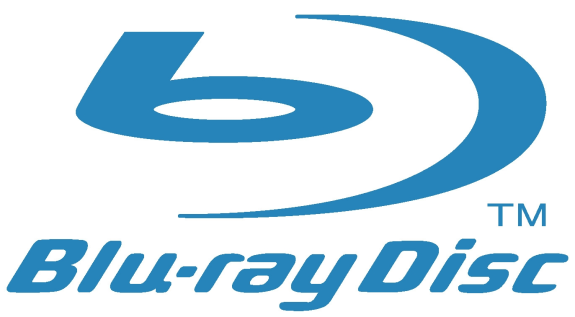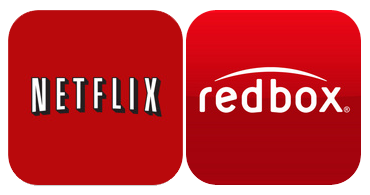Cinavia DRM: How I Learned to Stop Worrying and Love Blu-ray’s Self-Destruction
by Ganesh T S on March 21, 2012 11:00 AM EST- Posted in
- Home Theater
- Blu-Ray
- DRM
- Cinavia
DRM (Digital Rights Management) is intended to protect media from being played in an unauthorized manner. However, more often than not, it fails to serve the purpose. Many people in the content industry are fully aware that it is not possible to stop media piracy. They view DRM as a method to slow down the pirates. The panel discussion on anti-piracy measures at the HPA 2011 Tech Retreat compared this to using a key to lock a car, even though a thief with proper equipment could still steal it.
High definition content is valued by the content owners, resulting in extra efforts being taken to protect them from being pirated. For example, while standard definition Netflix streams play on a variety of platforms, high definition streams require more secure systems with protection across all stages of playback. Similarly, not much effort has been taken to stop the usage of open source DVD decrypters / decoders, which mean that the consumer doesn’t need to invest in a licensed player to play back DVDs. Open source software like VLC can play back protected DVDs without any issues.
Blu-rays, on the other hand, with their high definition content, are yet to be hacked enough to be played back with full experience using open source tools. There is a constant tussle going on between the decryption tool makers (who enable the Blu-ray disc content to become unprotected) and the Blu-ray publishers who don’t want this to happen (and try to find new ways to encrypt their Blu-rays without breaking player compatibility in the field). The net result is that almost every new Blu-ray fails to play back on a player if it doesn’t have the latest firmware updates. This is obviously a drawback for consumers who just want to put the disc in the tray and enjoy the movie.

In today’s piece, we will be concentrating exclusively on Blu-rays. A look at the market trends seems to indicate that online streaming services like Netflix and Hulu are overtaking conventional media distribution channels such as DVDs and Blu-rays. However, this doesn’t mean that optical media will die out anytime soon. Currently, a large number of consumers don’t have reliable enough Internet access to guarantee a good experience with premium streaming services. Market research indicates that Blu-ray sales have indeed shown an annual increase. This growth can be attributed to the low cost of Blu-ray players (some could be found for as low as $49 last November) and the rising number of $5 Blu-rays available in the bargain bins of various big box retailers. Blu-ray rentals from companies such as Redbox have also shown an increase in popularity.

The BDA sees Blu-ray shipments growing for the foreseeable future. However, they have also realized that the future of the Blu-ray industry lies in eventually adapting to the cloud / Internet infrastructure. The UltraViolet initiative is geared towards this. We will look at this in detail later in the piece.
The rise of VoD services will definitely threaten Blu-ray, particularly because of the ease of use associated with them. In almost all cases, one can start watching a movie on Netflix or Vudu with a few clicks. Compare this with current Blu-rays where users have to put up with a number of trailers and copyright messages before the movie starts playing. It is no wonder that consumers with high speed Internet often prefer services like Vudu over Blu-rays. Given this situation, Blu-rays continue to come with pesky DRM mechanisms. The latest in this lineup is Cinavia. Before going into its details, we will have a brief overview of all the DRM mechanisms involved in Blu-rays.










121 Comments
View All Comments
ganeshts - Wednesday, March 21, 2012 - link
Just want to make sure you are not trolling...Sasparilla - Friday, March 23, 2012 - link
I've got an original PS3 and most disks never have an issue, but I remember buying a new bluray several years ago, putting it in and blam - you have to update your firmware (or whatever the message was) to play this disk.Not a fallacy at all - happened to this user. Once a new updated DRM is pushed out onto a BluRay that requires an update on the player end you'll get that message and have to update.
scottwilkins - Wednesday, March 21, 2012 - link
Blu-Ray was the worst thing to ever hit the consumer market. Even Sony's CEO once stated he made a mistake with it.Only thing that keeps me from streaming more, is now ISPs are putting in data caps. Consumers just can't win these days!
Bateluer - Wednesday, March 21, 2012 - link
I just bought the BluRay of the movie Super. Only to find out that my admittedly old PowerDVD 8 BD Edition would not play it. 10 dollar BD movie and 30 minutes searching the Internet and 'gray' areas for a player to play it. :(Ended up just downloading a 1080p BD rip from a torrent site and watched that.
Sasparilla - Friday, March 23, 2012 - link
Reminds me of this cartoon:http://theoatmeal.com/comics/game_of_thrones
colonelciller - Wednesday, March 28, 2012 - link
Awesome!... thanks for posting that...totally hilarous... the mockup of the torrent site was pure win
Golgatha - Wednesday, March 21, 2012 - link
Because without tools like AnyDVD HD being available, their content is a huge time waster and completely out of touch with my viewing habits. I cringe to think that parents suffer through 2-3 minutes of outdated commercials, FBI warnings, and loading screens each time the family wants to sit down and watch a movie. In my household, it's browse to the file via my Tversity DLNA server and hit play. For Bluray, it's browse to the ISO file, load, and play. I watch almost no TV because of ads and fluff, and I watch very few movies. When I do, I want to watch a movie and not be inconvenienced. I also like to own things rather than rent, so the streaming industry really holds nothing of value for me. DRM free downloads in 1080p quality, and you'll get my money. Anything less won't get purchased and can be easily replaced with the Internet, games, and a good book like it currently is in my household for the most part.Aikouka - Wednesday, March 21, 2012 - link
"Despite the studios putting in lots of money and effort into promoting 3D, it doesn't seem to have taken off as much as expected."The problem is that while a few movies may be decent in 3D, the price premium for these discs are way too high. I usually scope out stores for any good Blu-ray deals (sub-$10 deals), and 3D Blu-ray discs are usually $10 more than the 2D version. I was actually rather surprised when I saw Target selling The Immortals in 3D for only $2 more than the 2D version. Of course, that was only a sale, and last I checked, it was back to the usual $10 premium.
colonelciller - Wednesday, March 28, 2012 - link
3D tech is really so inconvenient to use that only an enthusiast would ever consider it... for the rest of the world the low quality, pain in the @ glasses & the ridiculous pricing schemes are a no-brainer... no thanksTegeril - Wednesday, March 21, 2012 - link
I can't remember the particular Blu-ray at this moment, but in the not too distant past I got one of the slimiest rental hack-jobs I'd seen yet. Lots of the discs from Netflix state 'Rental' on the label and are less showy, including different menus, etc. Basically, I know what I'm getting before the disc is actually in the player. The slimy movie in question, however, appeared by all accounts to be a retail disc. It had the retail menus, and all of the options in those menus were selectable. The slimy part? When you selected an item not on the rental disc, ready to settle in and watch, it popped up a message suggesting you go buy the Blu-ray.Hate.